By Greta Suiter, Manuscripts Archivist
In honor of the 80th anniversary of D-Day, students in the VICO 4112/5112 Illustration Capstone: Advanced Informational Graphics spring semester class created stunning infographic posters using the Cornelius Ryan Collection of World War II Papers as inspiration. The class is led by Assistant Professor Adonis Durado who graciously invites librarians and archivists to collaborate on this class assignment. In addition to introducing the class to the materials they use as subject matter, librarians and archivists also participate in critiques of the work, acting as clients for the students. This is one of my personal favorite collaborations with students because the work has an element of exploration and discovery – both with the subject matter and the creation of the infographics. This year they made blanket infographics, or panels that can exist independently, but show a larger image/story when combined.
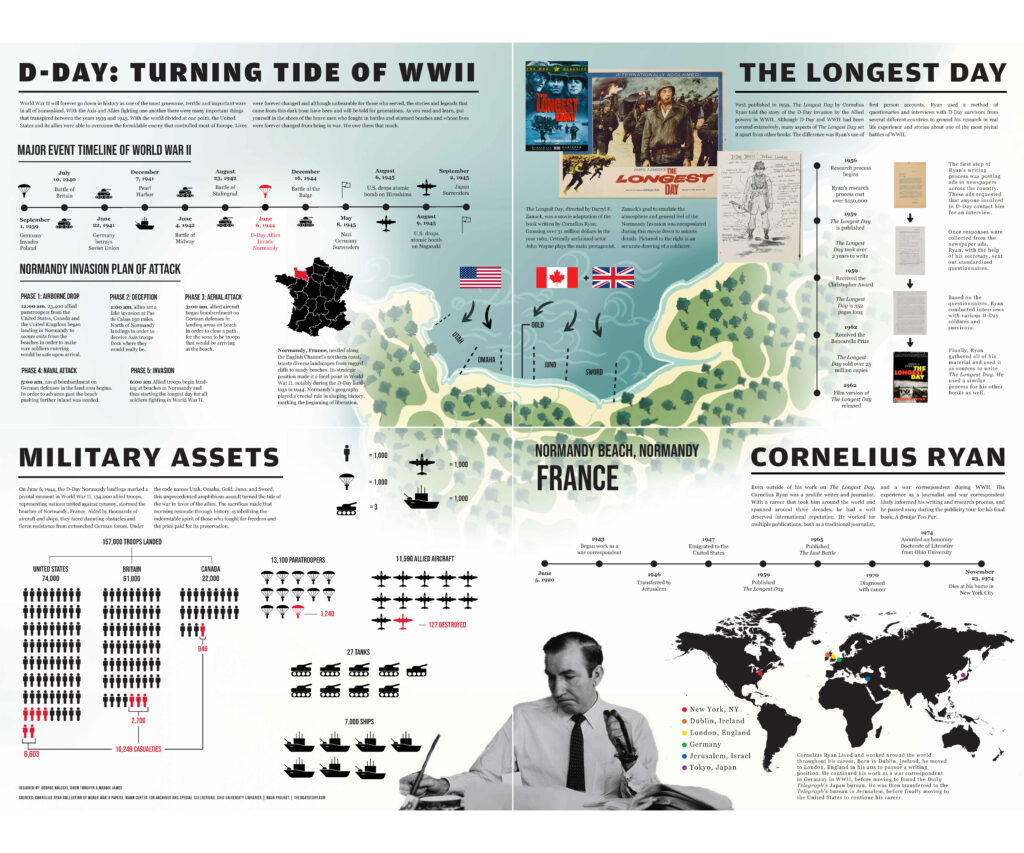
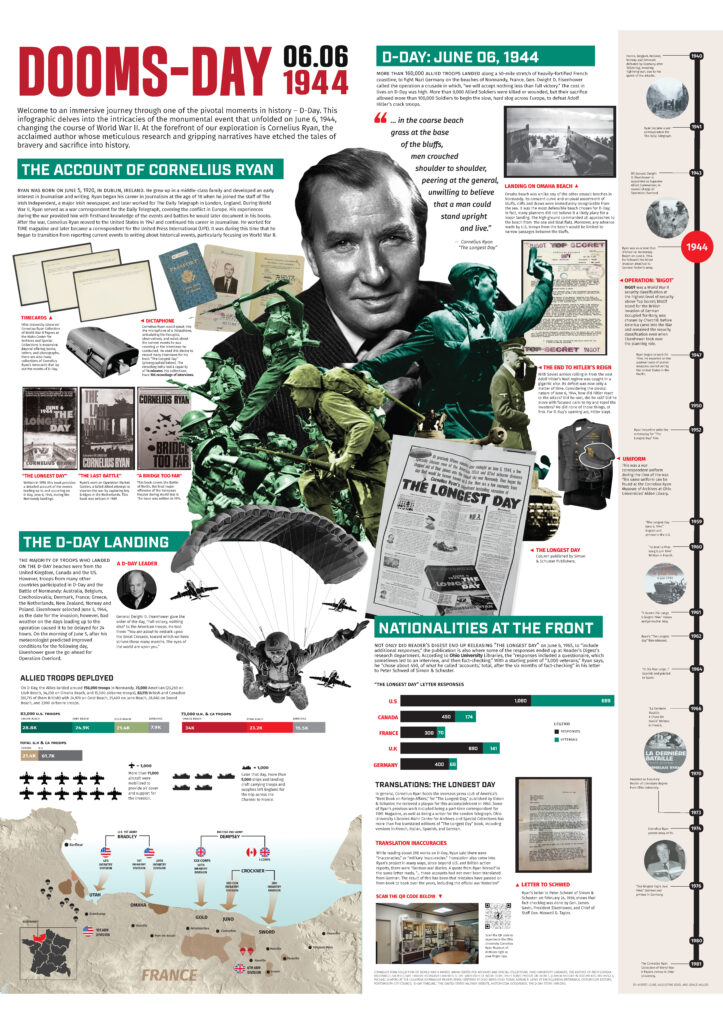
The students combined stats and images of items from the collection, facts about Ryan’s life and books, maps, and timelines to tell the story of the military operations of D-Day and information about Ryan’s book about D-Day, The Longest Day.
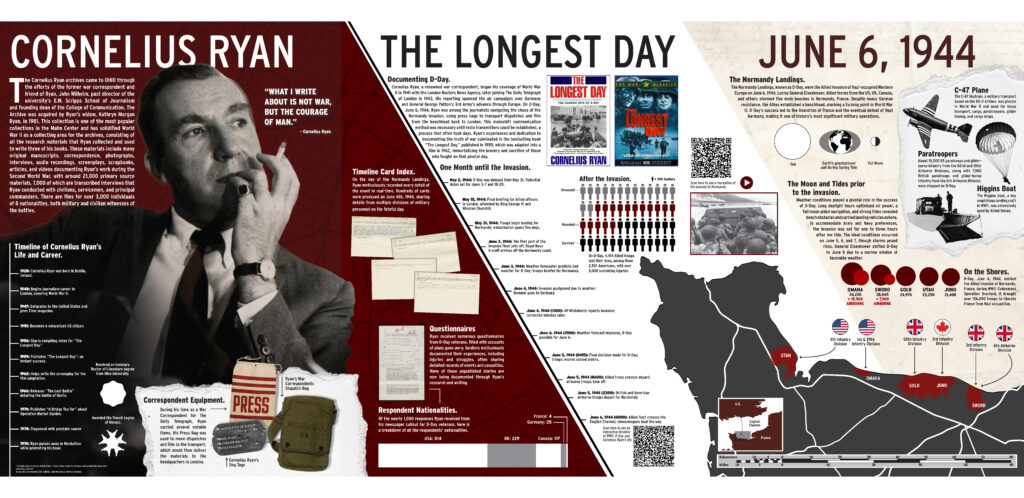
Many of the groups utilized the timeline index cards that Ryan created, meticulously documenting every minute of D-Day starting and ending at midnight. These cards have been scanned and are online in 24 parts, each part covering one hour of the day.
Students were also encouraged to utilize some of the thousands of questionnaires, surveys, and interviews that are part of the Ryan collection. Scanning of the collection is on-going and often prioritized based on user requests. In anticipation of the 80th anniversary we completed scanning questionnaires from 688 American troops relating to the The Longest Day. Ryan was looking to tell the military story of D-Day from those who lived it. The following exchange between Ryan and US Army Colonel Sidney Bingham is a fascinating example of how Ryan interviewed participants to gain compelling and accurate depictions of what happened.
[Bingham]: Well, they couldn’t get shooting because of walking through the water and it must have been loaded up with a lot of sediment and sand because I didn’t see one carbine or rifle that would operate.
Ryan: You mean that the water had gotten through. . .
Bingham: Sure. . . the sand had gotten into them . . . possibly there might have been sand suspended in the water or this might have occurred after they’d gotten their geiger rifles on through to the sand on the beach, but these things wouldn’t operate so . . . and they were just . . .they might as well had pogo sticks as M-1 rifles.
Ryan: Well now . . . would you. . . I mean. . .I have to try and bring this alive I have to take a little bit from here and there. Would it be fair to say that you said such things as we might as well have pogo sticks.. . I mean. . . would this be fair to say?
Bingham: I don’t want to get in trouble with the Ordnance.
Cornelius Ryan WWII papers, box 006, folder 08: Sidney Bingham, p. 18

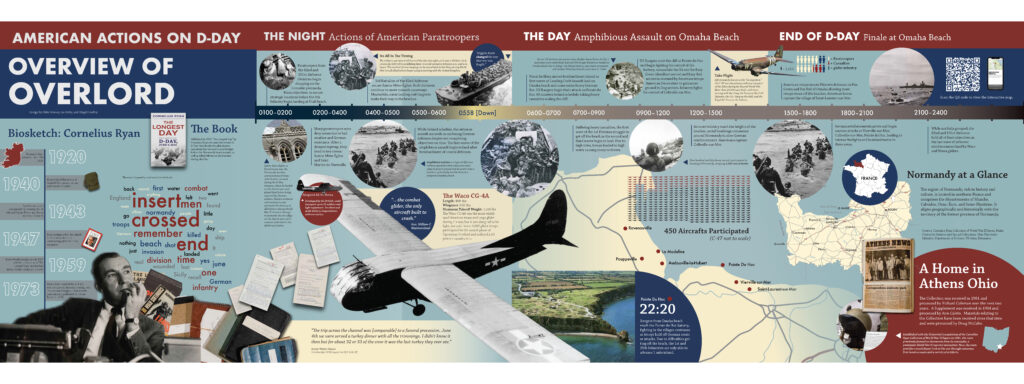
The above poster – Overview of Overlord – is also an award winner, taking first prize in the visual communication category at the annual Ohio University Student Expo!
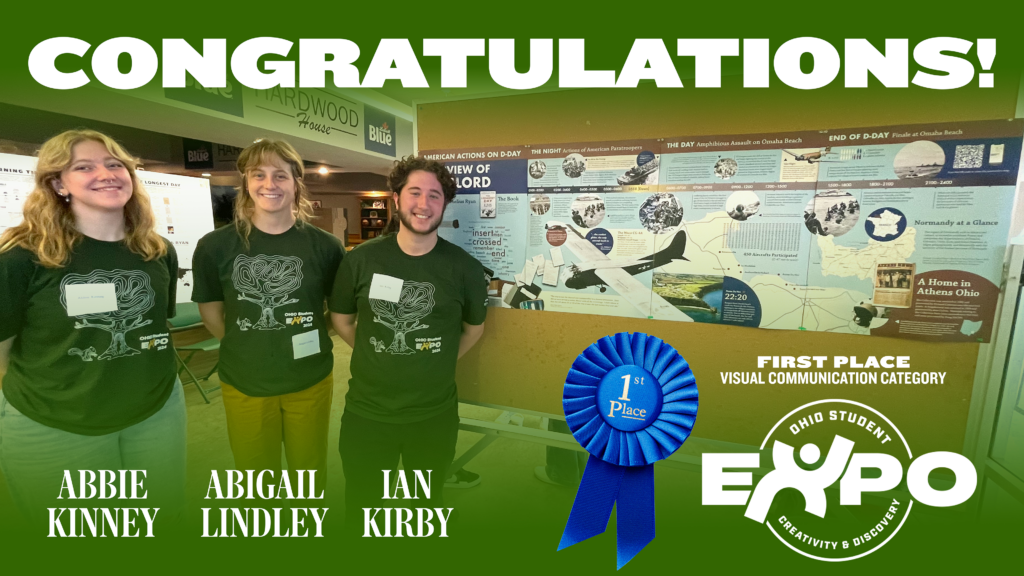
The posters are currently on display on the fifth floor of Alden Library outside of the Cornelius Ryan Room.
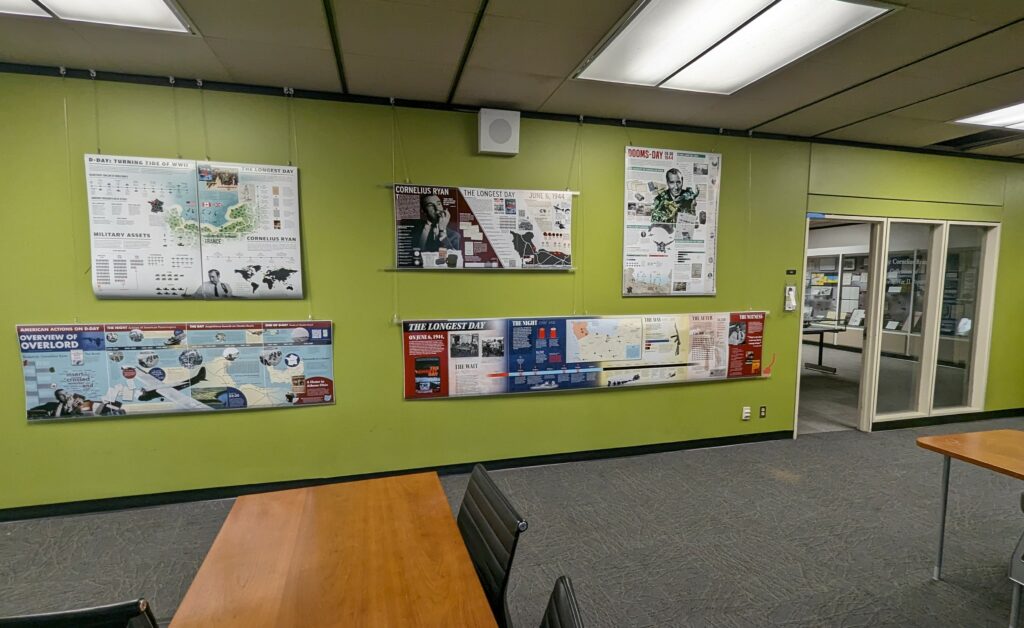
This project is the latest in an ongoing collaboration between the Mahn Center and the Capstone class. Previous projects used selections from the Rare Book collection and the Civil War Correspondence collection. You can read more about those projects here.